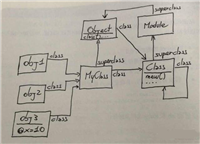rexml 是由 sean russell 编写的库。它不是 ruby 的唯一 xml 库,但它是很受欢迎的一个,并且是用纯 ruby 编写( nqxml 也是用 ruby 编写的, 但 xmlparser 封装了用 c 编写的 jade 库)。 在他的 rexml 概述中,russell 评论道:
我有这样的问题:我不喜欢令人困惑的 api。有几种用于 java 实现的 xml 解析器 api。其中大多数都遵循 dom 或 sax,并且在基本原理上与不断出现的众多 java api 非常相似。也就是说,它们看 上去象是由从未使用过他们自己的 api 的理论家设计出来的。 通常,现有的 xml api 都很令人讨厌。他们采用一种被明确设计成非常简单、一流且功能强大的标记语言, 然后用讨厌的、过多的和大型 api 对它进行封装。甚至是为了进行最基本的 xml 树操作,我总是不得不参考 api 文档; 没有任何东西是凭直觉的,而且几乎每个操作都很复杂。
虽然我并不认为它有多么令人心烦,但我同意 russell 的观点:xml api 对于大多数使用它们的人来说无疑带来了过多的工作量。
示例
看下面的book.xml:
引用
<library shelf="recent acquisitions">
<section name="ruby">
<book isbn="0672328844">
<title>the ruby way</title>
<author>hal fulton</author>
<description>
second edition. the book you are now reading.
ain't recursion grand?
</description>
</book>
</section>
<section name="space">
<book isbn="0684835509">
<title>the case for mars</title>
<author>robert zubrin</author>
<description>pushing toward a second home for the human
race.
</description>
</book>
<book isbn="074325631x">
<title>first man: the life of neil a. armstrong</title>
<author>james r. hansen</author>
<description>definitive biography of the first man on
the moon.
</description>
</book>
</section>
</library>
1 tree parsing(也就是dom-like)
我们需要require rexml/document 库,并且include rexml :
require 'rexml/document'
include rexml
input = file.new("books.xml")
doc = document.new(input)
root = doc.root
puts root.attributes["shelf"] # recent acquisitions
doc.elements.each("library/section") { |e| puts e.attributes["name"] }
# output:
# ruby
# space
doc.elements.each("*/section/book") { |e| puts e.attributes["isbn"] }
# output:
# 0672328844
# 0321445619
# 0684835509
# 074325631x
sec2 = root.elements[2]
author = sec2.elements[1].elements["author"].text # robert zubrin
这里要注意的是xml中的属性和值被表示为一个hash,因此我们能够通过attributes[]来提取我们需要的值,元素的值还能通过类似于path的字符串或者整数来取得.其中用整数取的话,是1-based而不是0-based.
2 stream parsing(也就是sax-like parsing)
这边使用了一个小技巧,那就是定义了一个listener 类,它将会在parse的时候被回调:
require 'rexml/document'
require 'rexml/streamlistener'
include rexml
class mylistener
include rexml::streamlistener
def tag_start(*args)
puts "tag_start: #{args.map {|x| x.inspect}.join(', ')}"
end
def text(data)
return if data =~ /^\w*$/ # whitespace only
abbrev = data[0..40] + (data.length > 40 ? "..." : "")
puts " text : #{abbrev.inspect}"
end
end
list = mylistener.new
source = file.new "books.xml"
document.parse_stream(source, list)
这里介绍一下streamlistener 模块,这个模块它提供了几个空的回调方法,因此你可以为了实现你自己的功能而覆盖它.当parser 进入一个tag时,就会调用tag_start方法.而text方法也是类似的,他只不过是当读取到数据时会被回调,它的输出是这样的:
tag_start: "library", {"shelf"=>"recent acquisitions"}
tag_start: "section", {"name"=>"ruby"}
tag_start: "book", {"isbn"=>"0672328844"}
tag_start: "title", {}
text : "the ruby way"
3 xpath
rexml通过xpath 类来提供xpath的支持. 它也同时支持dom-like和sax-like .还是前面的那个xml文件,我们使用xpath可以这样做:
book1 = xpath.first(doc, "//book") # info for first book found
p book1
# print out all titles
xpath.each(doc, "//title") { |e| puts e.text }
# get an array of all of the "author" elements in the document.
names = xpath.match(doc, "//author").map {|x| x.text }
p names
输出是类似于下面的:
<book isbn='0672328844'> ... </> the ruby way the case for mars first man: the life of neil a. armstrong ["hal fulton", "robert zubrin", "james r. hansen"]







发表评论